Notes on the 2020 Hutton wildflower seed initiative. How to prepare and sow. What’s in the packet. Guides on insect visitors. Let us know how you get on (with photographs). FAQs. Contacts.
At the James Hutton Institute, we are looking at the positive steps we can take as an organisation during the COVID-19 pandemic to support our staff’s physical and mental well-being, but also to benefit our local environment.
During our time in lockdown, the UK has seen an unprecedented upsurge in gardening. As the nation finds itself restricted in time spent outside of their homes, it is only natural to try and make the best of the green areas which we can access and interact with – our gardens. The benefits of gardening are also well-documented [1], reducing anxiety and depression, improving cognitive function and increasing a sense of community. We can all benefit from spending some time outside getting our hands dirty, and that includes our local wildlife too.
With this idea in mind, the Institute has sent each member of staff and its UK-based students a small pack of native wildflower seeds with the aim of creating a 1 square metre area of wildflowers. The pack will include easy to follow instructions on how to prepare the area for sowing, and the required aftercare.
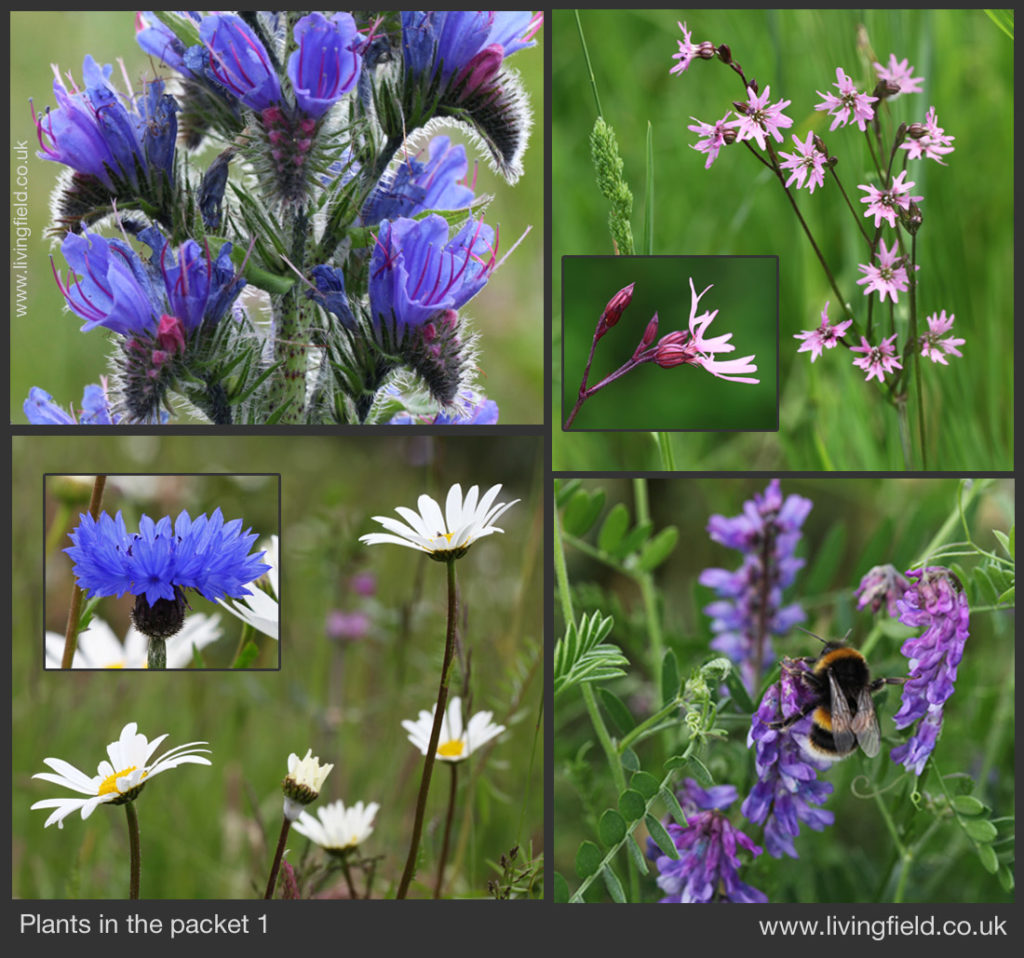
Why grow wildflowers?
While most people may be aware that our native wildflowers are in decline across the country, the extent of this decline is far greater than most realise. Since World War 2, the UK has seen the drastic loss of 97% of its wildflower meadows, due to factors such as land development and changing agricultural practices [2].
When wildflower meadows disappear so do the pollinators, as well as other insects, which rely on these wildflowers for food and habitat. A recent study [3] showed a third of our wild bee and hoverfly species are in decline across the country since the 1980’s, with losses focusing on our rarer species. This of course has knock-on effects for other animal species who rely on these insects for food, including birds, bats and other small mammals.
Sowing native wildflower seeds in gardens at home may not contribute to their conservation in the wild, but it will help provide for our struggling pollinators, many of which have specific associations with wildflower species. For example, some insect species are solely reliant on one plant species, e.g. the larvae of the Small Blue Butterfly will only live on the flowers of the Kidney Vetch [4]. Without that one species of plant, that insect will become extinct!
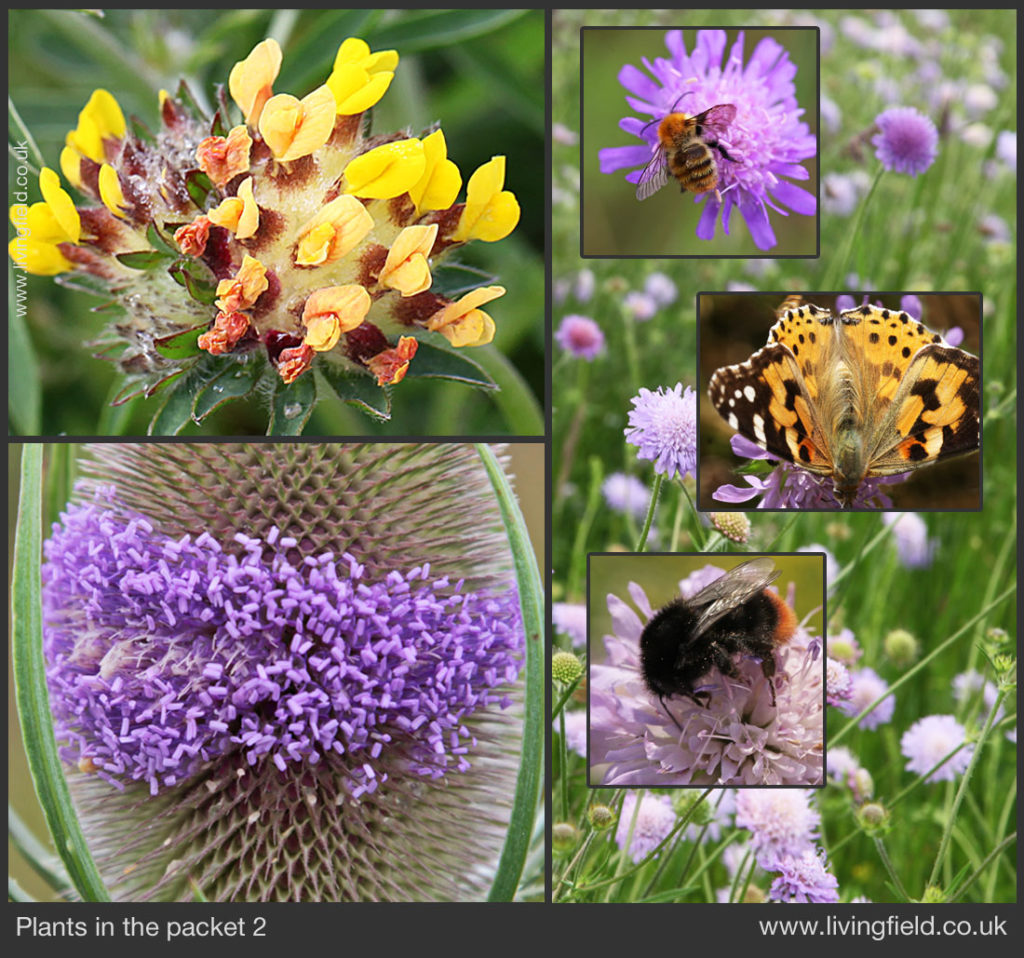
I’ve got my seeds… what’s next?
We realise that for many people, this will be the first time that they have attempted to grow wildflowers! It may seem a bit daunting for those of you who are not green-fingered, but this activity is actually one that can easily be done involving small children. Also compared to most plants, wildflowers require only a small amount of care and maintenance each year.
As well as the activity of getting outside and sowing the seeds, once the plants are established, we expect you may see some new insect visitors to your wildflower area. Every wildflower in the mix is known to have some association with types of Bees, Wasps, Moths, Butterflies, Hoverflies, or Beetles. So the following links and downloads are given to help with identification. ,
- The organisation Buglife offers a viewable Pollinator identification chart for the most common insect visitors.
- A pollinator ID guide for children has been prepared, shown in the image below, so even the smaller members of your family can learn a bit more about their local nature! Click Visitors to your flowers to see and download the full-size image file (jpeg, 404 kb).
- A list of the known pollinator associations for the wildflowers in the seed mix is also given on a downloadable page. Click Wildflower-pollinator interactions to view the PDF file (135 kb).
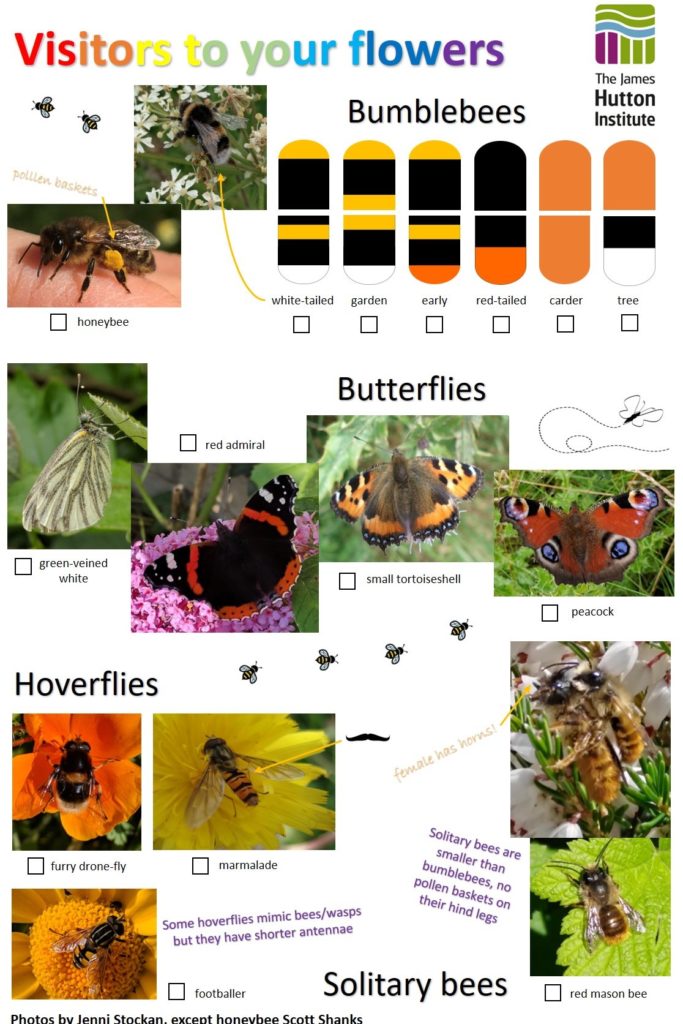
A list of Frequently Asked Questions has been prepared in order to try and answer common queries you may have (see below).
Guidance on sowing, growing and identification
If there is anything you are still unsure of, please feel free to get in touch via email to –
- alex.stuart@hutton.ac.uk
- jenni.stockan@hutton.ac.uk
- gladys.wright2019@outlook.com
Share your experience and photos
We would love to be updated on how you get on with sowing and managing your wildflowers, so please do keep pictures or videos. We are working on ways you can share these pictures. For now, those on Twitter can post and copy to –
- @James HuttonInst – the Hutton’s main Twitter link
- @HuttonES – Ecological Sciences Group Twitter
- @LField2020 – began late March 2020 to share and comment in the lockdown
- @JenniStockan – Jenni’s personal Twitter page
FAQs
What exactly am I planting?
The wildflower seeds provided are from Scotia Seeds, which is the only large-scale producer of Scottish native wildflower seeds of wild origin within Scotland. This means that, unlike generic seed mixes from elsewhere in the UK, Europe or even as far away as America, these seeds are actually adapted to growing in our Scottish climate. This is important because the seeds have better germination rates, produce more flowers and most importantly flower at the right time of year for our local insects.
The seed mix is the Get Nectar-rich Quick Mix, which contains a mixture of 24 annual, biennial and quick-growing perennial wildflowers, which means that flowers will come through later this summer as well as in years to come. Here’s some further information:
- Web site of Scotia Seeds.
- Description of our seed package on the Scotia web site – Get Nectar-rich Quick Mix.
- Guide from Scotia Seeds on Sowing and Managing your wildflower plot.
- On the NESBiP web site: talk by 3 speakers (including Scotia) and a Q&A session – Amenity Grassland and road verges – doing more with less!
- Links to further Information on the plant species in the mix prepared by Alex Stuart.
And here are the plant species:
Annual: cornflower, corn marigold, mayweed. Biennial: teasel, viper’s bugloss, weld. Perennials: yarrow, clustered bellflower, common knapweed, field scabious, meadow cranesbill, wood cranesbill, rough hawkbit, ox-eye daisy, wild marjoram, selfheal, red campion, ragged robin, white campion, bladder campion, hedge woundwort, red clover, tufted vetch, bush vetch.
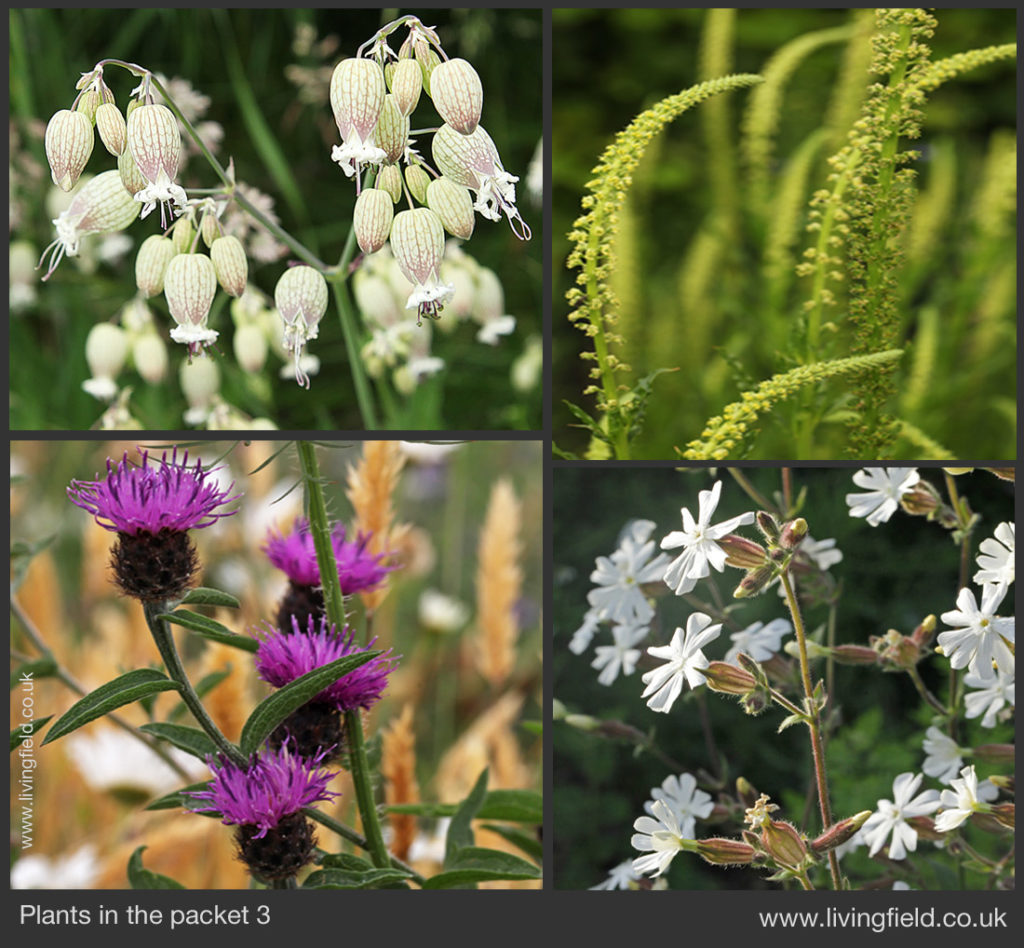
How do I prepare the ground and sow the seeds?
Full information on preparation, sowing and aftercare is given in the guide from Scotia Seeds linked in the list above.
In general, the ground needs to be prepared for sowing by removing any existing vegetation from the area, preferably pulling it out by hand or cutting it short and then digging it in. The soil then needs to be prepared for seeding by making it as smooth as possible. To do this, break down any bigger clumps with a fork and then repeatedly rake it over until the soil texture is fine. Ideally you can leave your prepared soil for a week or two so any dormant weeds or grasses that come to life can be removed before you sow your seeds.
Wildflower seed sowing should be done on a calm day, as seeds are often very small and can easily be blown away. Spring sowing can take place up until the end of June, but should be done as early as possible, as later sowings are more vulnerable to effects of drought. You may want to add some sharp sand or flour to your wildflower seeds to help identify where you have sown them. The seed mix should be spread evenly across the 1 m2 area – it may look like a tiny amount, but do not be tempted to over-seed a smaller area, as the plants need space to grow. Very gently rake over the area so that seeds are just barely covered and then press the seeds down by trampling the area by foot – think penguin walking!
I don’t have a garden, what can I do with my seeds?
While most of us are lucky to have our own garden, some may not be, or the garden may be shared with others or be not suitable for this kind of planting.
One alternative could be to plant up the seeds in large pots or containers. Wildflowers do need a fair amount of space to grow, so smaller pots will not be suitable in the long term. Grow Wild have some good advice on planting up wildflowers in containers [6].
Small pots could however be used to grow the seeds on as small plug plants, which could then be relocated at a later date, for example to a friend or family member’s suitable garden.
We do not endorse guerrilla gardening – so please do not go out into the countryside or your local public greenspace and sow the seeds there! You must always have the permission of the landowner before sowing/planting anything.
Can I grow the seeds indoors?
It is easier to keep the wildflower seeds outside throughout the entire growing process, in order for the plants to both grow at the right rate and be useful for our pollinating insects.
Seeds can be brought on indoors, which will result in quicker germination, but these will then need to adjust slowly to cooler temperatures outside. You would need to take them outside during the day, and then back inside before nightfall, over the course of a week or so.
How do I know what wildflowers are growing?
While the full wildflower list is shown above, it is important to say you will not have every single type of wildflower listed!
What you will likely see coming up in the first few weeks and months are the annuals and the start of the faster-growing perennials.
In early growing stages, some wildflowers can be harder to identify, while some such as Yarrow and Vetch will be easier to identify from just the leaf shape, but most plants are much easier to identify when in flower. Links to specific identification information about each wildflower species will be given on the What am I planting? section in the F.A.Q.’s
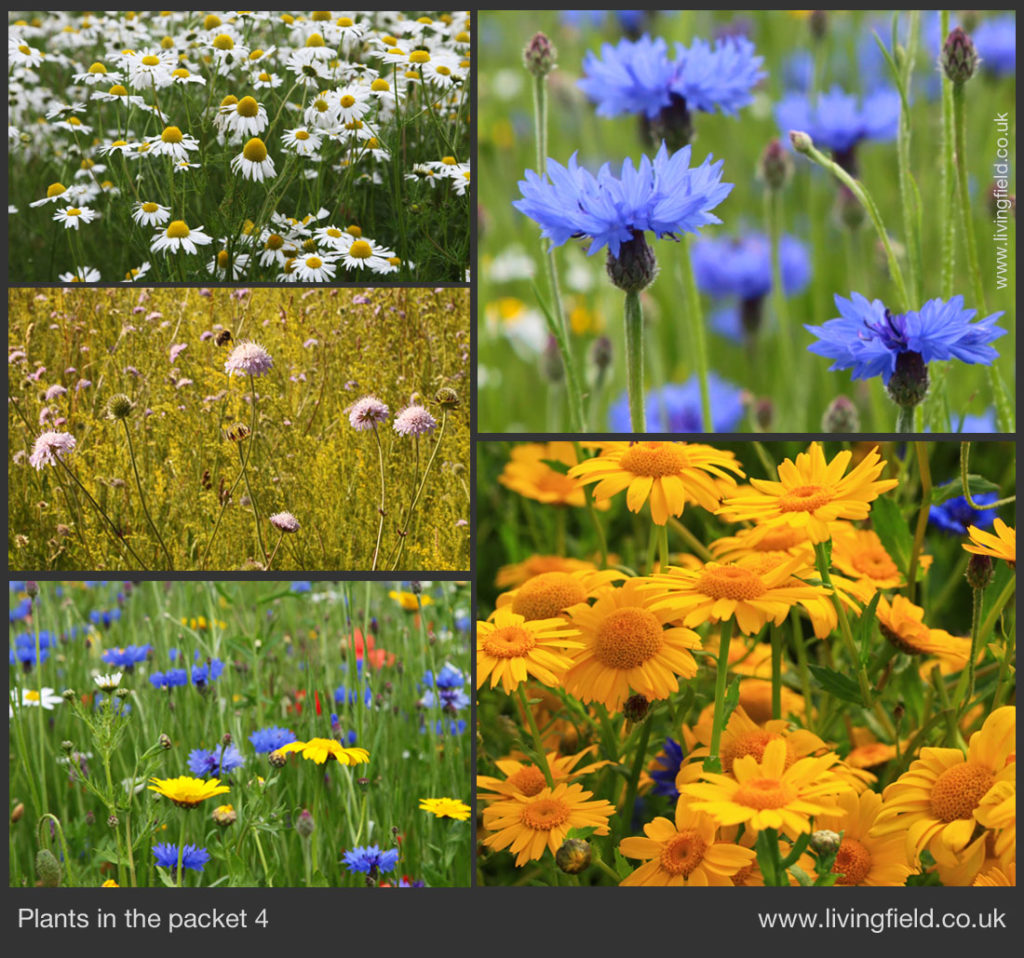
Will having such a small area of wildflowers really make a difference to local wildlife?
In short, yes! (But this is something that we would like to investigate!) Approximately 550 James Hutton Institute staff will each receive enough seed for 1 m2 of wildflowers. That means in total, 550 m2 more native Scottish wildflowers will be growing potentially by the end of the summer. Not a bad thing!
There are obviously some benefits and downsides of having the 550 m2 spread out across the landscape. For example, one large field of the same area may be able to act as more of a stronghold for pollinator species, but that would depend on pollinators being able to make their way there. Habitat fragmentation and habitat loss are big contributing factors to the loss of pollinators – it is becoming increasingly hard for them to find enough of the right food sources and travel between these areas. By having small pockets of pollinator-friendly flowers across the city and countryside we are hopefully improving the ability of insects to move more easily across bigger areas.
More on ‘seed saving’ and managing wildflower areas over the winter and onwards is given in the PDF file: Hutton wildflower seeds further information.
Authors / credits

Text and downloads on this page by Alex Stuart (alex.stuart@hutton.ac.uk) and Jenni Stockan (jenni.stockan@hutton.ac.uk) at The James Hutton Institute, Craigiebuckler, Aberdeen. Alex is also Local Biodiversity Coordinator for the North East Scotland Biodiversity Partnership (nesbip@hutton.ac.uk).
The Hutton Wildflower Seeds initiative was organised by Deb Roberts. Emily Beats weighed, packed and posted the seeds (what a job – many thanks from us all, Emily).
Plants in the three panels were grown at various times in the Living Garden by Gladys Wright and friends (photographs by Geoff Squire). There are more images of the plants in the mix on this web site at pages on legumes, meadow, cornfield, bee plants and dyes.
Sources / links
[1] Soga, Gaston & Yamaura. 2017 Gardening is beneficial for health: A meta-analysis. Preventative Medicine Reports. Link to the article on at Science Direct.
[2] On the state of Britain’s meadows, see this news article in Plantife.
[3] Powney et al. 2019. Widespread losses of pollinating insects in Britain. Nature Communications.
[4] More on the Small Blue at Butterfly Conservation and on Kidney Vetch at Wildlife Trusts. See also the Living Field’s Kidney Vetch and the Small Blue.
[5] Advice on growing wildflowers in containers – see the Grow wild web site at How to sow in containers. Saving your wildflower seed for next year – see the Grow Wild web site at Seed saving.
[Last edited: 29 April 2020, with additional text and links]
